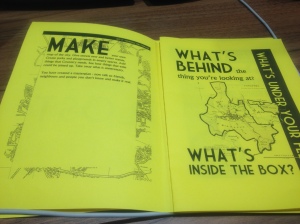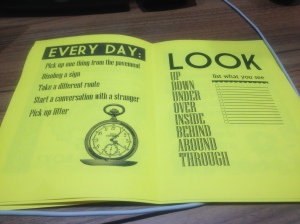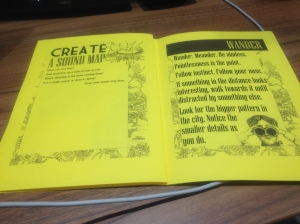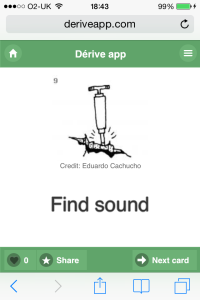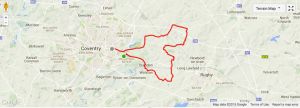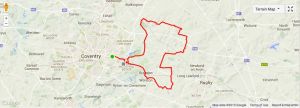To begin the production process my group had to overcome hurdles that were out of our control. Some examples of these, location scouting, casting and equipment availability.
The pre-production planning process wasn’t straight forward and after writing an initial narrative about a stalker hacking systems to find someone we scrapped the idea, this setback meant we had wasted two weeks that could have been used wiser. However despite the setback the second idea, a simpler story about a man spending all his time in the office hoping for a promotion only to be faced with losing his job during cut backs was chosen. All the paper work was done fast and to a high standard to catch up on the weeks past, four drafts of the script were made before deciding on the final script, a common process that most, if not all scripts go through.
Whilst our Director and DoP wrote the script, the rest of us were location scouting, looking for a suitable office space was much more difficult than first anticipated, we had searched many suitable office building which came with price tags beyond our budget, so we looked closer to home. We searched university campus building for offices and found three potential options. After countless messaging back and forth we had eventually received permission to film in FL215 in the library. The process had taken up three weeks that we didn’t have, so production was started immediately.
Casting was very quick, our director knew exactly who he wanted to play the role and after talking to Paul and Sarah they were both instantly on-board with the film. They had both worked exceptionally hard on set however Paul had missed a final day which meant we had to reschedule for two days before hand in, this wasn’t ideal but the group handled it well and performed professionally. Availability of the equipment was another problem, booking out the LED panels to get the best light possible was difficult as they were constantly booked out, to combat this we adapted and filmed around other people to gain access to them. Adapting to the situation is a good skill especially as a sound technician. Being the sound guy I had to adapt to scenarios, getting the right sound with as little interference as possible or being in shot, although a lot was to do with ears my equipment did help me to monitor it and my skills and understanding of the hardware improved during the production of the film. I read Video Skills (Video Skills: 47-69) which taught me about different microphones and their benefits and drawbacks, as well as levels and capturing the best sound. Other source material I read were available via Moodle (Job Description: 2015). These gave me a good insight into what is required from my role and what the best way to capture audio depending on the situation.
The editing process was relatively quick, two days of solid editing to ensure the highest quality possible. Our editor did plan in advance creating presets for colour correcting that he could use as a baseline. His professionalism and understanding of what he wanted from our film allowed him to make concise decisions. Editing sound was a challenge as cutting out electrical interference from the LED meant cropping the waveform which done right is ideal, but slightly one way or the other can reduce low tones and cause distortion in voices and movement, after quite some time and patience it was sorted and cleaned ready to be equalized and finalised.
Some skills that I developed that I am particularly proud of is holding back and letting the director, DoP and producer decide and make decisions. Before I would have made comments and suggested ways to do things but taking my role seriously I focussed solely on getting the best sound, I did give an opinion when asked or expressed concern when unsure on something. Having access to some of the best equipment like the H6 zoom allowed me to monitor decibel levels and have full control over the sound quality, this enhanced my skill and understanding of sound and how it should sound and look visually on sound monitors.
The EPK came together quite quickly, using a handful of existing EPK we took the best of each and produced ours. The Layout was inspired by “Close your eyes” by Sonsol Productions and “Gasp” by Elche Berlingo. The artistic design is thanks to our editor who had his own in vision of what will make it look professional, arty and have a big impact on the viewer.
The final production outcome of the film was to a high standard and I wouldn’t change anything, the film captures the blue mundane style of an office block and puts our characters is real situations, i.e. promotions and staff cuts, something that is common in the last few decades with the financial crisis. Even the braking of the chair and trying to hide it is something an audience can relate to in one way or another.
Things to improve on would be communication with the producer. This is more down to them, due to other commitments and work they were unable to be present throughout the production process, this doesn’t reflect the outcome of our film, this is because our DoP stepped up to take the role whilst our producer wasn’t present. This meant that things took longer than they should have to be arranged and sorted.
To conclude I believe the production went well and was a good learning curve and allowed us to produce something we are proud of and will be submitting to film festivals in the near future.
Video Coming Soon
Bibliography
Cook K, Waterlow C, Janvier P, Baker M. (2008).Video Skills. Institute of Videography. Essex
Job Description – Sound Recordiest [online] Available at https://cumoodle.coventry.ac.uk/mod/url/view.php?id=522305 (01/03/2015)
Close Your Eyes [online] Available at http://bit.ly/1jsUiC0 (07/03/2015)
Gasp [online] Available at http://www.festival-cannes.fr/assets/Image/Direct/047662.pdf (07/03/2015)
The Chair [online] Available at http://issuu.com/graingerdavid/docs/the_chair_pk_email_72 (07/03/2015)
This Path Ahead [online] Available at http://www.festival-cannes.fr/assets/Image/Direct/045661.pdf (07/03/2015)
The Escape [online] Available at http://www.newfilmmakersla.com/mediakits/2012/the-escape.pdf (07/03/2015)
Muscles [online] Available at http://www.musclesmovie.com/presskit/ (07/03/2015)
Night Shift [online] Available at http://www.festival-cannes.fr/assets/Image/Direct/045185.pdf (07/03/2015)



